Learn the different types of cuffs for pants, sleeves, bracelets, earrings, necklaces. The humble cuff offers a multitude of variation in fashion and utility.
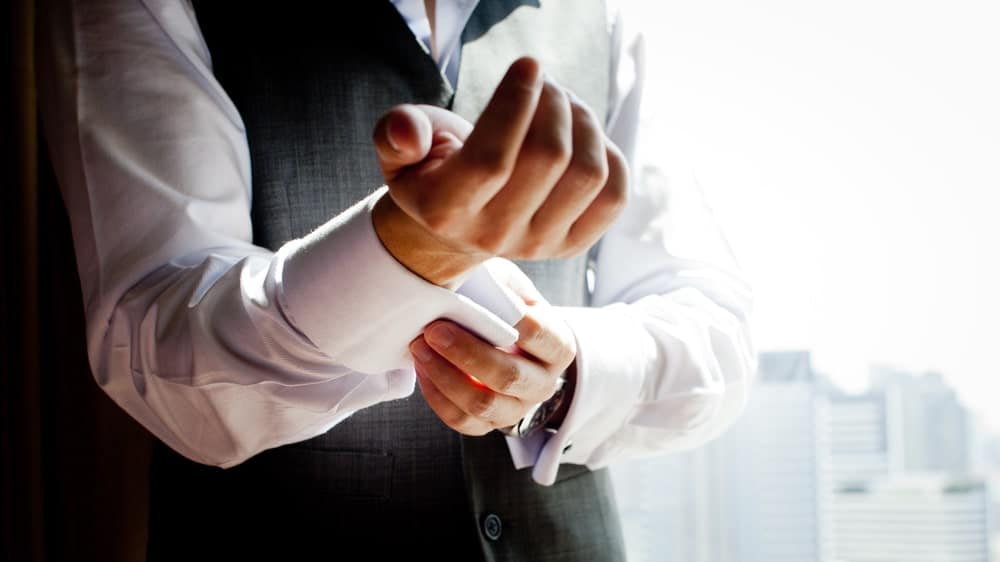
Cuffs show an amazing array of designs on more items than you probably imagine. You can cuff pants, sleeves, and collars. Many designs of each already come cuffed. Cuffs also come as earrings and bracelets.
The term cuff means so many things. In relation to pants, the term refers to the folded edge at a hem’s bottom. It consists of excess fabric which when unfolded, allows you to take out the hem and lengthen the pants. In reference to shirts, it refers to the finishing at the end of a sleeve. In jewelry, it describes a design that wraps around the ear, arm, or leg.
In the case of both pants and shirts, you can add a faux cuff if the apparel does not already have a cuff or to change the look of the item. The faux cuff typically gets sewn onto the pants but may attach in other ways to the sleeve. You can achieve a number of different fashion looks with these faux cuffs.
Contents
- Types of Pants Cuffs
- Types of Shirt Cuffs
- Types of Jewelry Cuffs
- Frequently Asked Questions (FAQs)
- When did people start rolling or folding their pant legs and why?
- When should you roll cuff pants or shirts?
- How do cuffs affect the clothing design?
- What is the proper way to wear cuffed pants?
- What length pants cuff does a taller man need?
- Why should you sew the cuff into place?
- What differences are there between US and US fashion and pant cuffs?
- Can you alter a pair of pants with cuffs?
- What methods of fastening to sleeve cuffs use?
- What are cufflinks?
- Why do some shirts have contrasting color collars and cuffs?
- How should a cuff fit?
- How do bespoke shirts differ?
- Should the dress shirt cuff show beneath the sport coat or suit jacket?
- Does the cuff shape matter?
- Can you mix cuff types?
- Can you roll up your sleeves and your jacket together?
Types of Pants Cuffs

In relation to pants cuffs, also called a turn-up or roll, you will find little variation. The cuff simply folds the fabric and may or may not be sewn into place.
One-and-a-half-inch cuff
Commonly sewn into place on dress pants, chinos, and khakis, the one-and-a-half-inch cuff actually provides one and five-eighths inches of excess fabric. No hem shows. In reference to jeans, the cuff typically consists of hand rolling or folding the fabric into place. This is also called the single roll.
Double cuff
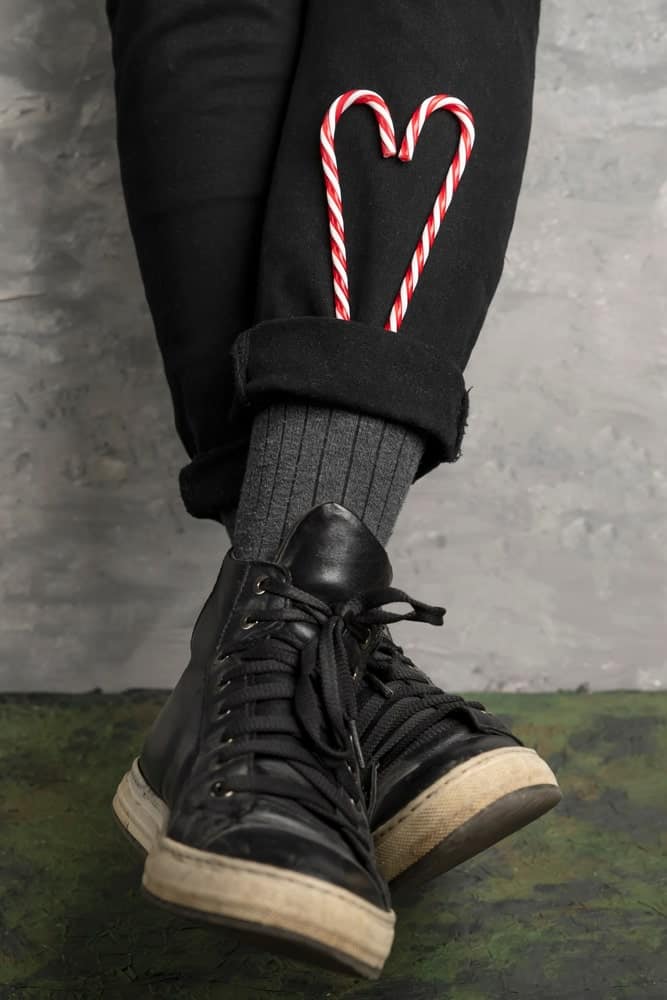
Twice rolled or double cuffs, simply refer to a one-inch cuff rolled twice so that you see none of the hems of the jeans.
Long cuff
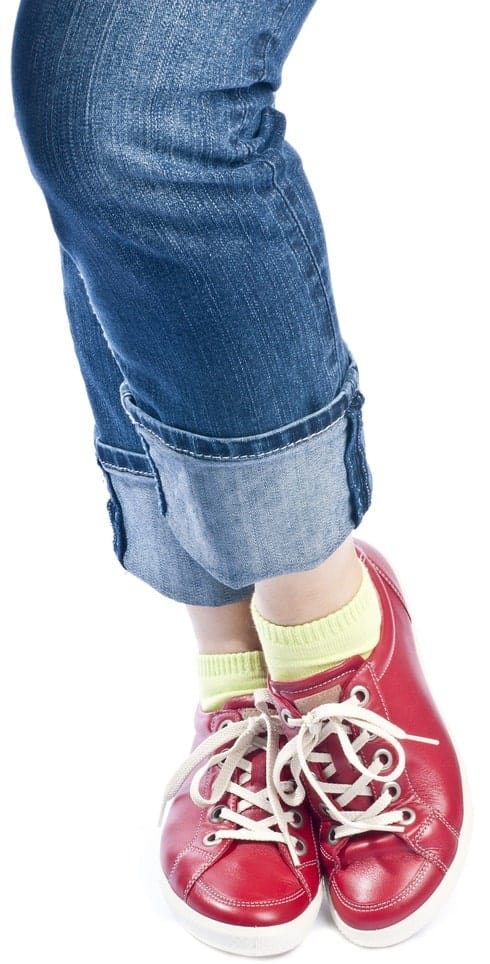
Worn with very long jeans, this requires a sturdy fabric like denim. You flip the fabric up to form a very long cuff of three to six inches.
Tight roll
Worn with jeans or chinos, the tight roll gathers the fabric in a cuff that rolls more than once upward with the edge tucked into the inside of the pants. This causes the bottom of the pants to appear to taper in at the ankle.
Angled Cuff
Also referred to as the cuffed angled hem, this option moves the cuff to the back of the pants leg only. Typically used on trousers or suit pants, this option shows no fabric break in front, but cuffs the rear so it cannot become trapped beneath the heel of the shoe.
Types of Shirt Cuffs
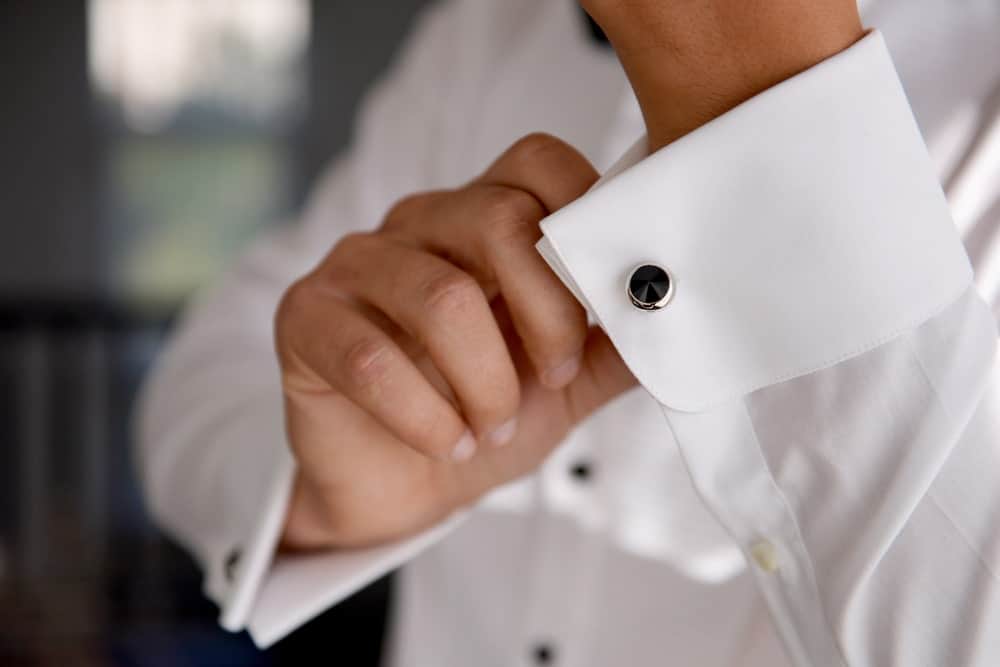
In relation to shirt cuffs, much variation exists. The cuff may include a no button, one button, two-button, or multiple button closure.
One Button Barrel Cuff
The typical cuff used on a business dress shirt or casual shirt. The one-button barrel cuff provides a fused cuff and measures less than 2.5 inches.
Long One Button Barrel Cuff
A longer version of the one-button barrel cuff measures 2.875 inches in length. Those individuals with long arms of 34 inches or more can wear these well.
One Button Mitered Cuff
Typically used on dress shirts for an elegant appearance, it uses a fused cuff and a length of about 2.6 inches. A mitered cut in fashion means the same as it does in construction. The occurs on an angle, in this case, a 45-degree angle.
Two Button Rounded Cuff
Another dressy cuff used in shirts worn with suits, this fused cuff provides a crisp appearance with a longer length of about 2.9 inches. The two buttons usually have a horizontal space of approximately three-quarters an inch between them. Occasionally, a designer spaces these vertically.
Two Button Mitered Cuff
Also, a fused cuff, you frequently see the two-button mitered cuff on dress shirts. This cuff uses a length of about 2.9 inches or less and works well with a wristwatch.
French Cuff
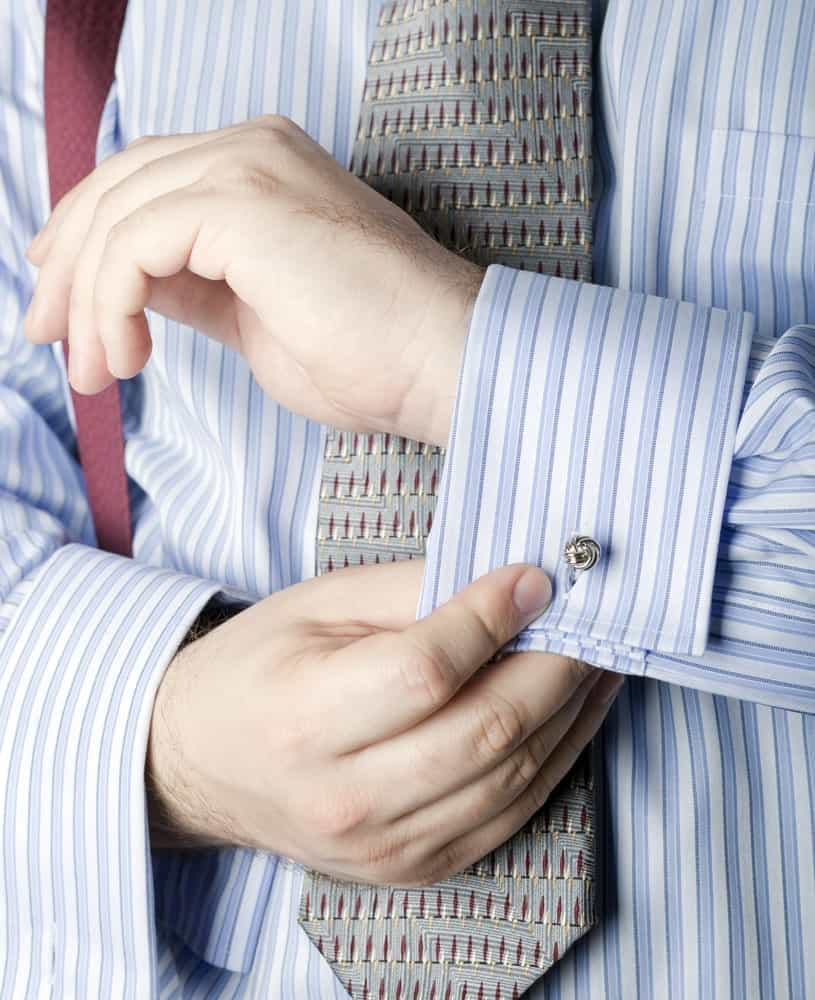
A style of the double cuff, the standard French cuff appears on most tuxedo shirts. This fused cuff provides a crisp appearance and requires cufflinks. It measures 2.9 inches or less and doubles back over itself.
Rounded French Cuff
Just as formal as its standard version, the rounded French cuff provides rounded back edge corners. You also fasten these cuffs with cufflinks. They measure 2.9 inches in length or less.
Convertible Square Cuff
You can button the convertible square cuff or use or close it with cufflinks. This cuff type measures 2.5 inches in length. A square cuff refers to a cuff with a right angle of 90 degrees.
Soft One Button Cuff
A soft cuff refers to an unfused cuff. Typically used on casual shirts, it puckers slightly. These cuffs measure 2.4 inches in length or less.
Soft Long One Button Cuff
Another unfused cuff, the soft long one-button barrel cuff resembles the long one-button barrel, but with less crisp wear. Individuals with longer arms of 34 inches or more will find this cuff provides the illusion of balanced proportion. These cuffs typically measure 2.9 inches in length or less.
Soft Square Two Button Cuff
A longer casual cuff, the soft square two-button cuff uses an unfused cuff. These cuffs typically measure 3.25 inches or less.
Convertible Cuff
The convertible cuff uses either a button or cufflink to fasten the cuff. Typically, a double cuff, designers sometimes use a barrel cuff in this style, adding an extra buttonhole between the buttons to accommodate the use of cufflinks.
Cocktail Turn Back Cuff
Many people think of this as the James Bond cuff since Sean Connery as 007 popularized it. Also referred to as the Portofino, the turn back cuff, or the Casino, this design refers to a cuff of double-length using a barrel design, folded over and featuring diagonal line cuff hems. The style continued on the “Dr. No” shirt and the evening shirt was worn by 007 as played by actor Daniel Craig.
Types of Jewelry Cuffs
Jewelry cuffs typically appear as earrings or bracelets, but some designers create necklaces in a cuff design. These function as a collar and have no clasp. Instead, they have a small opening at the rear and, like the bracelets, use a pliable metal or mesh so the wearer can bend them to place around the neck, ear, bicep, or wrist.
Bracelet cuffs
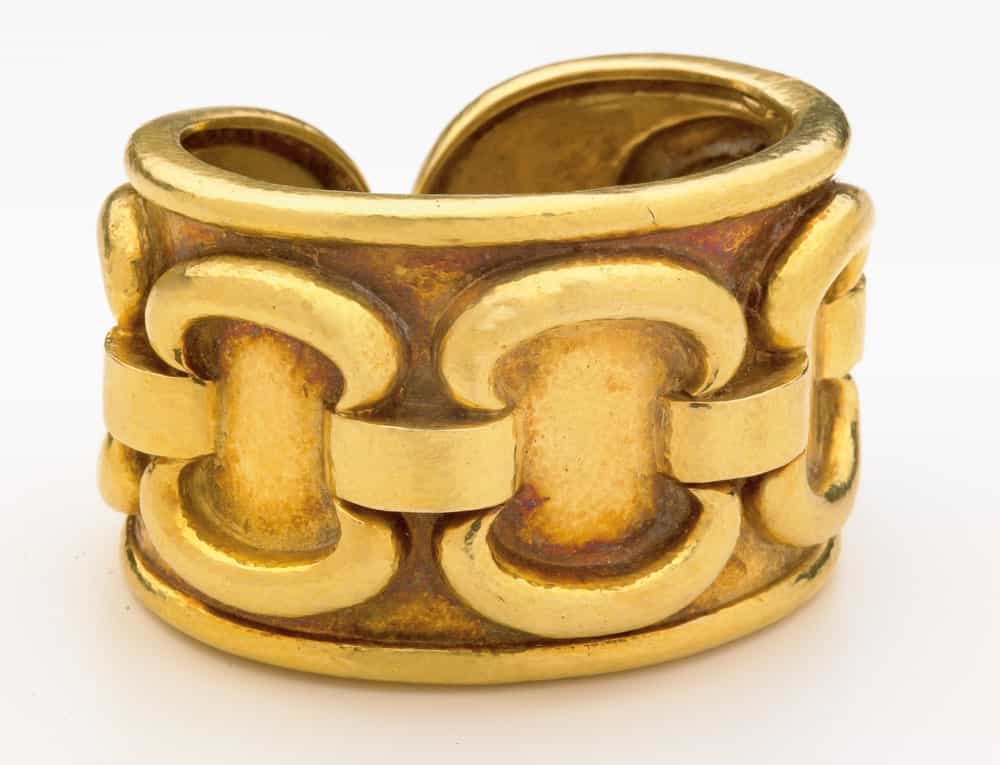
The bracelet cuff also referred to as a band, uses higher karats of gold, copper, stainless steel, silver, oxidized metals, or mesh to form the bracelet. Worn on the arm or wrist. Designers make cuff bracelets for men and women. They may include gemstones such as diamonds, rubies, or sapphires.
Options for younger women may use rhinestones or semi-precious stones such as amethyst, mother of pearl, topaz, etc. Some of these cuffed bracelets may include engraving on them to either personalize the cuff with a monogram or to engrave it with a saying or mantra. The bracelet cuff should be worn on bare skin, not over clothing.
Cuff earrings
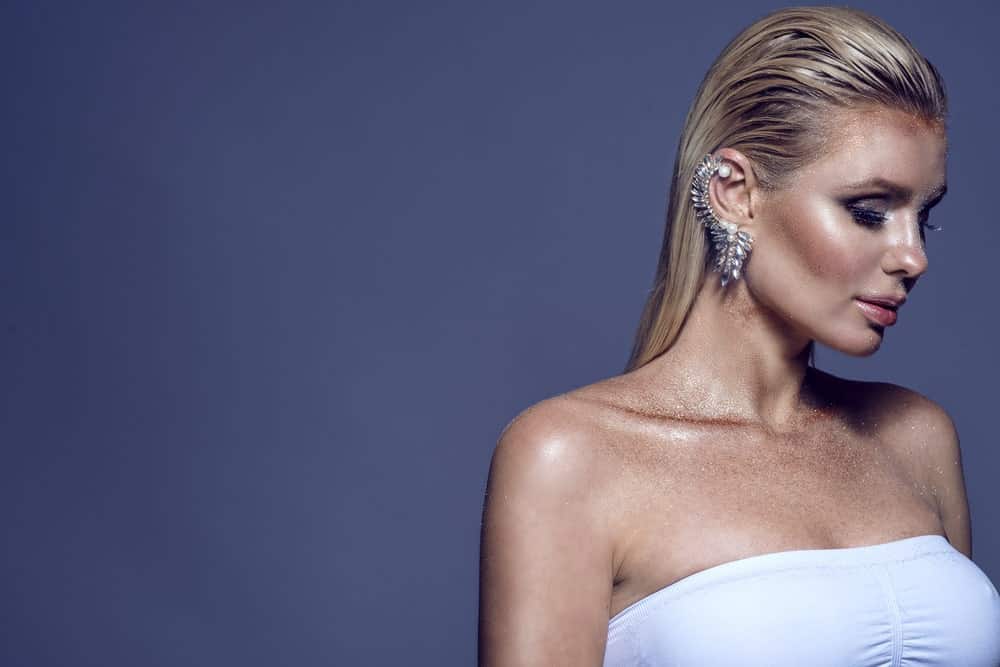
A cuff earring design slips around the ear without requiring piercing or clipping the earring to the ear. These cuffs typically fit onto the top of the earlobe and up the ear’s edge.
Frequently Asked Questions (FAQs)
Questions about cuffs abound, especially about how to wear different types of pant or shirt cuffs. This FAQ addresses the major questions.
When did people start rolling or folding their pant legs and why?
Initially, individuals folded their pants hem up to keep it from becoming damp or muddy in inclement weather. As a fashion statement, in 1890, while King Edward the Seventh served as the Prince of Wales, the fashion-forward monarch had his tailor cuff his pants with a sewn-in cuff. This permanent cuff was the first of its type and, of course, caught on since he frequented high courts throughout Europe.
In fact, the cuffed pant began propagating into men’s business attire as soon as King Edward began wearing them and by the 1940s, everyone was wearing cuffed pants. The exception came during the fabric shortage of World War II. To save fabric, pants used no cuff.
Once the war ended, cuffs came back into style. Watch any film from the 1950s and you will see the “greaser” character wearing his blue jeans with a rolled, one-inch cuff. (Jeans were always blue in those days.)
When should you roll cuff pants or shirts?
The old English adage of rolling up your sleeves refers to throwing off your formal demeanor to get down to work. That phrase serves as a valuable rule for wearing either pants or shirts. You roll up or cuff your pants or sleeves in casual or business casual situations.
Permanent cuffs provide a business look for pants whether chinos or suit pants. The latter typically uses an angled cuff or a one-inch permanent cuff. With respect to shirt sleeves, wear button-closure cuffs in casual situations and everyday business situations.
Wear cufflink-closure cuffs in formal situations. For those in college, wear a buttoned cuff shirt to class and fraternity meetings, but a cufflink cuff shirt with your tuxedo for formal fraternity functions.
How do cuffs affect the clothing design?
On pants, a cuff adds weight to the pant leg to create a drape of the fabric. They work well with double-breasted suits to create visual balance. For this reason, cuffs typically are not used on slim-fitting or tapered pants for men.
Tuxedo pants never come with a cuff and you should not add one. Neither black-tie nor white-tie ensembles use cuffs. Cuffs should not be worn with a morning coat, therefore do not appear on a stroller suit.
What is the proper way to wear cuffed pants?
A permanent cuff requires a plain hem. The front of the pant bottom should merely brush the top of your shoe. They should not create a deep break or a fabric puddle at the ankle which looks sloppy. A permanently cuffed pair of pants will fall slightly shorter than an uncuffed pair of pants.
Choose cuffs or pleats, but not both since it interrupts the trousers’ lines. Worn with dress boots, the pants should just cover the boot without catching on it so they do not puddle.
What length pants cuff does a taller man need?
A man shorter than 5’6” should avoid wearing cuffed pants since it will make him appear shorter. A man of 5’10” or shorter should wear a cuff of standard length – one and five-eighth an inch. A man of more than 5’10” should opt for a slightly longer cuff of one and three-quarters inches.
Very tall men, such as those of 6’4” or taller can easily wear a two-inch cuff on their pants. When rolling up your jeans, you may choose the length you desire, but remember to check your look in a full-length mirror before you leave the house.
Depending on how you fold or roll your pants, you can make your legs appear longer or shorter. Depending on the length of pants’ cuff, you can make yourself appear taller or shorter, or thinner or beefier.
Cuffs seemingly add bulk to a person’s frame, so if you want to appear thinner, wear suit trousers without cuffs. Taller men who do not want the legs for days look should wear cuffed pants. Women, on the other hand, who do want the legs for days look, should wear uncuffed pants.
Why should you sew the cuff into place?
A cuff can fall down if not sewn into place. This does not usually occur with denim jeans since the heaviness of the fabric helps stabilize the cuff. On trouser cuffs though, rolling the fabric does not typically cause the cuff to stay in place. That requires sewing it in place.
What differences are there between US and US fashion and pant cuffs?
Both side of The Pond agree that pant cuffs work best on flat-fronted formal trousers. In the UK, you rarely find cuffs on pleated trouser. In Europe, no male wears cuffed pants with no Italian shoes. Women’s attire functions under entirely different rules. Both the US and the UK agree that cuffs and double pleats clash.
Can you alter a pair of pants with cuffs?
Yes and no. Essentially, if you have a pair of pants that are just too long for your legs, you can cuff them. You need to take them to a tailor to have them adjusted. The opposite is true of pants of the right length for your legs that have already been hemmed.
Unless the pants use an unusually long hem with about an inch and a half of fabric, you will not have enough fabric from which to fashion a cuff. Uncuffing already cuffed pants alters the pants’ proportion and design.
What methods of fastening to sleeve cuffs use?
Shirts use three different types of sleeve cuffs as closures. These are cufflinks, studs, and buttons. Since cuffs wear out over time, better shirts offer replaceable cuffs.
What are cufflinks?
Fashioned of wood, metal, or ivory, cufflinks attach to the cuff of a man’s dress shirt through two button holes. Similar in design to a button earring, the cufflink opens for insertion and caps like a pierced earring. Their shape varies from square or rectangle to round or oval. Some geometric shapes can also be found.
They may be crafted of wood, solid gold, silver, or brass and embellished with gems. Those crafted of ivory have become harder to come by since the 1990s raised awareness of how ivory gets harvested in Africa. Those designs typically eschew gemstones.
Why do some shirts have contrasting color collars and cuffs?
Ah, fashion remains fickle, but you can periodically find these shirts with the torso and sleeves in a color such as blue or salmon, but the collar and cuffs in white. Originally, this design cropped up on better men’s shirts that needed replacement cuffs frequently.
Business men and royalty wearing these shirts often stained them during business lunches or dinner parties, requiring more frequent cuff replacement. White cuffs and collars could go with anything and did not require locating matching fabric.
How should a cuff fit?
With respect to both men and women, the shirt cuffs should not fit too tightly or be too large. They also should not be too small. A too-small cuff crinkles when buttoned. A French cuff does use slightly more material than a barrel cuff and, therefore, will fit a little looser.
How do bespoke shirts differ?
When you approach a tailor to have a custom shirt crafted, they will measure you at various points of your chest, torso, and arms to ensure a perfect fit. This includes the wrist. The tailor will ask if you typically wear a wrist watch and on which arm. The tailor makes the cuff of your wrist watch arm a little larger and looser to accommodate the watch.
Should the dress shirt cuff show beneath the sport coat or suit jacket?
In conservative dress situations, you should not allow your shirt cuffs to peak out from beneath your jacket. In casual situations, you may show between a quarter of an inch to half an inch of shirt cuff. Showing no cuff in a casual situation, makes you look like a slob. Showing too much cuff makes it seem that you no longer fit into your sport coat.
Does the cuff shape matter?
Shirts with rounded cuffs were designed for wear with or without a jacket or suit coat. The square cuff may be worn with or without a jacket though it typically gets used on a dress shirt or formalwear. You see the angled cuff worn with formal wear.
Can you mix cuff types?
You enter murky fashion waters if you try to mix too much variety into your sleeves and pants. Typically, a showy sleeve cuff such as the French cuff pairs well with a plain bottomed pant. Conversely, a shirt sleeve cuff of simple design pairs well with a cuffed pant.
You should not attempt to pair a cuffed pants with a formal cuff sleeve though. The two clash horridly. You can use a one or two-button standard sleeve cuff with cuffed trousers.
Can you roll up your sleeves and your jacket together?
Men should not do this with their jackets and sleeves. Women can get away with this look since it popularized in the 1980s. In most situations, you should remove your jacket and hang it, then roll up your sleeves.
References:
Real Men Real Style: Cuffs or No Cuffs
Paper Cloths: Cuff Styles
Bespoke Unit: Shirt Cuff Styles




